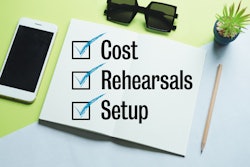
Have you ever looked up after weeks, even months, of event planning and thought, “What I am doing?” The input you’ve received from stakeholders is all over the map, even though they all have the best intentions to plan something amazing. The fact is that when your event seems to lack cohesion, it can usually be traced back to one thing: a lack of a clear objective.
As event professionals, it is our responsibility to guarantee the outcome of the event, whether it’s a conference, annual meeting, executive retreat, or other type of gathering. In order to achieve this, you need alignment and consensus from all stakeholders. But how do you get this? It starts with finding a common answer to a simple question: What does success look like?
When you know what success looks like, you know the objective you are working toward and are more effectively able to plan with clarity and purpose. Defining objectives is a best practice, and a fairly important one at that. It will allow you to deliver what your stakeholders expect and make the event truly valuable in the eyes of the attendees.
Here are four specific things that defining objectives will allow you to do.
1. Set the agenda with purpose.
The agenda-setting experience can be stressful, especially when you feel you have an abundance of options. When you define clear objectives from the start, your event’s agenda will take shape to reflect and support them. Critically examine how the line items that make up your agenda support the set objectives in the best way possible. For example, the event you’re planning typically employs a keynote speaker; however, the objective of the conference is to kick off a corporate initiative on creating an organizational culture of collaboration. In this case, you may want to look for a hands-on teambuilding activity instead. Regardless of the situation, in order to maximize your time and the budget of every line item, you may have to step outside “how it’s always been” and throw something new into the mix.
2. Plan realistically.
When you have your objectives set, you should be able to more effectively manage your event resources, such as budget, staff, or time required. Having a clear objective from the start will allow you to determine if you are appropriately allocating your time and money, or if something else may be better. For example, if your annual event budget has decreased, you will have to consider other options to achieve your objectives with less resources. Since you started by building consensus with the key stakeholders, when it comes time to make decisions or overcome a challenge, everyone involved can align around a common objective. As you progress through the planning process, you will be better prepared to manage expectations based on the agreed-upon objectives, and your predetermined definition of success will help you avoid getting sidetracked.
3. Get buy-in from everyone.
When you have clearly defined objectives, stakeholders such as potential sponsors or attendees can recognize the benefit of the event and use the objectives to explain why the event is worth their investment of time or money. You will find it is most effective to do this through pre-event communications such as email blasts or social media updates that focus on the relevance for attendees and get them excited and curious about what is to come. When you get buy-in, they are more likely to be engaged because they understand the purpose of the event and feel personally invested in its success.
4. Measure progress and adjust accordingly.
You can’t manage it if you don’t know what you’re managing. In the case of event planning, this means if you do not know what your objectives are and what success looks like, you will be uncertain what exactly you’re managing as all the elements of the event come together. By setting clear objectives, you will be able to measure your progress and act if any adjustments are needed to the strategy or execution along the way.
If you are to ensure success, get some peace of mind, improve the attendees’ experience, and wow your stakeholders, objectives are key. They allow you do all of this because you are armed with the necessary information to filter every decision through a set goal. If you are truly determined to guarantee the success of your event, this is a non-negotiable best practice.
Sue Wigston is the chief operating officer of Eagle's Flight, an experiential learning and training company.



















